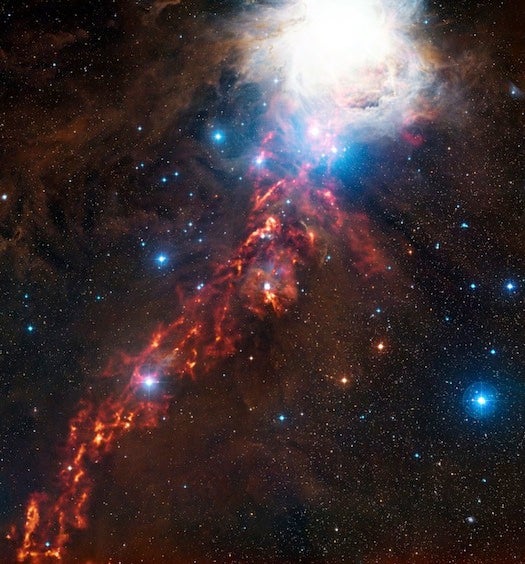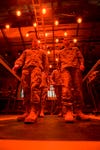The Week In Numbers: Fire In Space, The First Cloned Human Embryo, And More
1,350 light-years: the distance to a “fiery ribbon” stretching across the Orion Nebula, captured recently by a submillimeter-wavelength camera inside...

1,350 light-years: the distance to a “fiery ribbon” stretching across the Orion Nebula, captured recently by a submillimeter-wavelength camera inside Chile’s Atacama Pathfinder Experiment telescope. The ribbon is actually a glow given off by cold interstellar dust at wavelengths too long for human eyes to see.
4: the number of toes you need on each foot
8 weeks: the time it took a team of nerds to create real-life Mario Kart, complete with bananas, shells, and mushrooms
![Hunter Smith of Waterloo Labs [second from left] helped four interns transform go-karts into interactive racers fit for a Super Nintendo game.](https://www.popsci.com/uploads/2019/03/18/IBBZPMJFC347FVS2FIVBPA4EF4.jpg?auto=webp&optimize=high&width=100)
Geek Squad
2016: the launch year of a NASA spacecraft that will land on the asteroid Bennu, scoop up two ounces of its soil, and then fly the sample back to Earth. Scientists hope the soil will offer clues to the birth of the solar system and life on Earth.
11:18 a.m. ET: the time on May 14, 2013, at which the X-47B autonomous warplane became the first unmanned aircraft to ever complete a catapult launch from the deck of an aircraft carrier (video below)
2.64 billion years: the length of time that water discovered in a Canadian mine may have been untouched by Earth’s atmosphere. The stream may be the oldest free-flowing source of isolated water ever known.
500 miles: the distance a robot plane flew over Europe carrying human passengers

Remotely Piloted Jetstream
2013: the year scientists created the first cloned human embryo
1,500 watts: the power of the metal-halide vapor lamps in the U.S. Army’s brutal weather simulator, the only lab of its kind to use human test subjects (the lamps are so bright, it’s impossible to look directly at them)

March to the Heat
$10.7 million: the amount Google has just invested in a drone intelligence company
3,600 degrees Fahrenheit: the temperature on the surface of a distant, massive gas planet, which scientists recently discovered using Einstein’s theory of relativity

Kepler-76b With Star
40 million miles: the distance from Earth to NASA’s exoplanet-hunting Kepler spacecraft, discoverer of distant worlds large and small. The beloved telescope suffered a critical failure this week, though there might still be a way to save it.

Kepler Space Telescope
$300: the price of an animatronic robot kit designed to teach anyone robotics, one of the coolest inventions of the year

Deft Digits Teaser
4,000: the number of teeth an American alligator can regenerate during its life. Dentists are studying the giant reptiles to figure out a way for humans to regrow teeth.
$50,000: the price of a sleek, comfortable space suit for space tourists
![The metal neck ring of the second-generation (2G) space suit proved uncomfortable for a wearer while lying down, so Southern [right] and Moiseev [left] plan to integrate a helmet with a flip-up visor into the 3G suit.](https://www.popsci.com/uploads/2019/03/18/W5OBXZF4AQTPCVELOJR4AWCBEE.jpg?auto=webp&optimize=high&width=100)
Fit For Space Teaser
13,000: the number of customers the space tourism industry is expected to have by 2021. Scientists are warning that commercial spaceflights could fill the stratosphere with sunlight-absorbing black carbon.

MARS shot
2.2 millionths of a second: the lifespan of a muon, a negatively charged subatomic particle (scientists need a 600-ton, 50-foot-diameter magnet to measure them)

Moving Muons
0.05 percent: the blood-alcohol content to which all states should lower their threshold for DUI, according to the U.S. National Transportation Safety Board (all states currently have a blood-alcohol limit of 0.08 percent for driving)
5 hours: the time it takes to build your own gene machine, a pipe that copies DNA using the heat of a lightbulb

Gene Machine